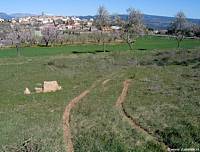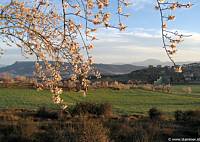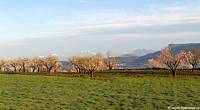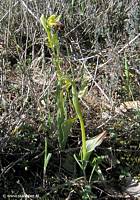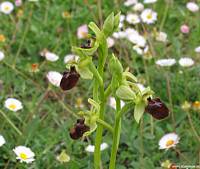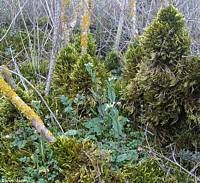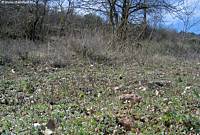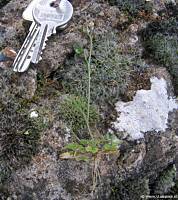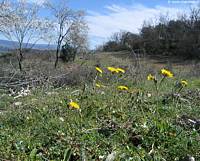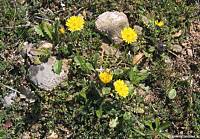|
|
Nature
Switched On
|
|
|
introduction |
2007 March 10 & 11, Saturday & Sunday
Again some anonymous visitors who had left their unmistakable markings on the terrain. This time caused by tyres on slippery, wet soil. The vegetation was completely destroyed in some parts and the 'scar' will probably be visible for some months. Their is a risk of getting too scrupulous about these incidents but I must admit that I am tempted to install a (horrible) fence and gate at the entrance. For the moment I try to block the entrance with some heavy cement bricks. What this incident makes clear is that the soil is quite vulnerable when wet. This weekend we talked we the bulldozer driver who we wanted to move the big stones of our neighbour (see the entry of 23 December 2006). He commented the same thing: it is not advisable to move around the terrain with a heavy machine in winter or spring. So we had better exercise some patience and wait for the summer drought. |
Saturday 15:41 |
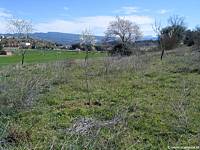
It's a good period to plant fruit trees so we had bought a cherry tree, two plum trees and a quince (Cydonia oblonga ) tree, all of them adapted to relatively dry and calcareous soil. We planted them in the central, lower part where the soil is probably somewhat wetter and there is a lot of sunlight.
|
||
| The
orchard plot with cherry, plum, quince and some almond trees. Looking east in the centre. Sunday 11:57 |
||
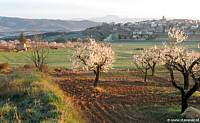
The almond trees were already finishing their splendorous flower festival and the photos presented here are from one week ago when they were at their best.
|
||
|
Sunday 4 Mar 8:00 Looking north-east at the extreme east point. |
||
|
Sunday 4 Mar 8:10 Looking north-west |
Sunday 4 Mar 8:07 Looking nort-east.
|
|
|
Saturday 3 Mar 17:35 |
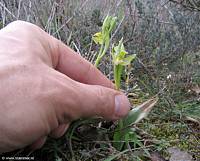
The mystery of the unknown orchid I reported on 10 February has been unveiled. One week ago on 3 March I had already discovered some undeveloped flowers but this weekend a complete determination was possible: it is Ophrys sphegodes (the Early Spider Orchid). It's a beautiful relatively robust orchid and I am glad to have at least two dozens of individuals who seem to prefer the centre terrace of intermediate height where I suspect the soil is relatively shallow. I include a nice image of this species (on the right) which I captured last year in the region of Monegros, near Zaragoza.
|
|
|
One week later: Sunday 11 Mar 10:57. Ophrys sphegodes with the typical withering of the leaves when flowering. |
23 April 2006, Sierra de
Alcubierre, Monegros, Zaragoza Ophrys sphegodes |
|
|
Apart from the almond trees and the odd orchid, typical flowers indicating the end of the winter are Perfoliate Penny-cress (Thlaspi perfoliatum) and Hairy bittercress (Cardamine hirsuta). Both are tiny but grow abundantly and seem to be edible, the first having a lot of vitamin C and the latter having a bitter taste. We haven't tried them so far but will certainly do.
|
||
|
Sunday 4 Mar 17:24 Thlaspi perfoliatum starting to flower. |
One week later, Sunday 11 Mar 12:48. Thlaspi perfoliatum with some fruits. | |
|
A field of
Cardamine hirsuta. When dry the linear
seedpods open violently ejecting the seeds for some metres. Sunday 12:49 |
Close up of
Cardamine
hirsuta. |
|
|
I shouldn't forget the more conspicuous yellow flowers of the Catsear (Hypochaeris radicata), also called False dandelions. They can easily be distinguished from the real Dandelions by the forked stems. The fresh leaves seem also to be edible and can be added to salads. The list of edible wild plants is growing steadily so why bothering about a vegetable garden..
|
||
|
Hypochaeris radicata. Looking south-east in the
western part. Sunday 13:27 |
||
|
The same Catsear group taken from above. Sunday 13:28 |
||
|
introduction
|
|
|
